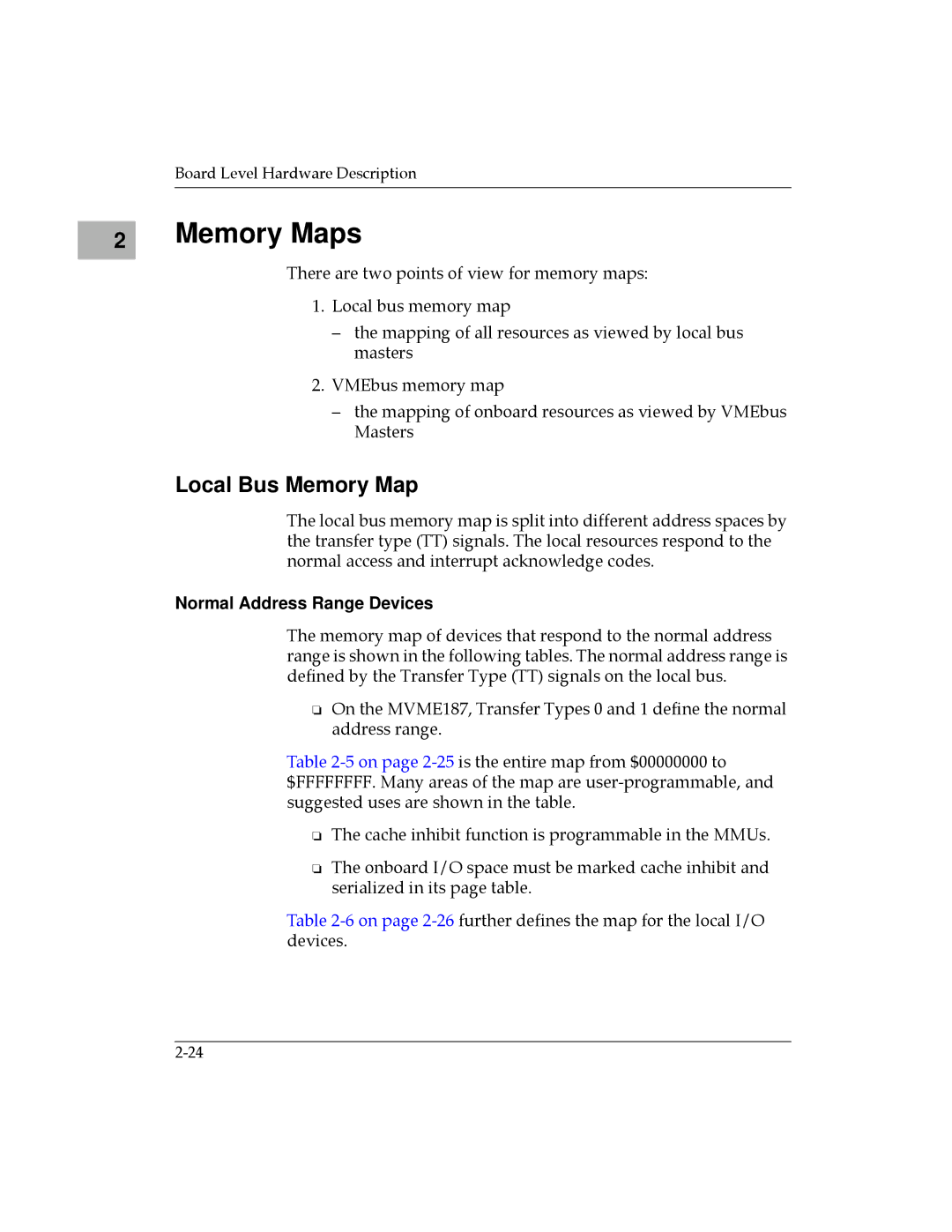
2 |
Board Level Hardware Description
Memory Maps
There are two points of view for memory maps:
1.Local bus memory map
Ðthe mapping of all resources as viewed by local bus masters
2.VMEbus memory map
Ðthe mapping of onboard resources as viewed by VMEbus Masters
Local Bus Memory Map
The local bus memory map is split into different address spaces by the transfer type (TT) signals. The local resources respond to the normal access and interrupt acknowledge codes.
Normal Address Range Devices
The memory map of devices that respond to the normal address range is shown in the following tables. The normal address range is defined by the Transfer Type (TT) signals on the local bus.
❏On the MVME187, Transfer Types 0 and 1 define the normal address range.
Table
$FFFFFFFF. Many areas of the map are
❏The cache inhibit function is programmable in the MMUs.
❏The onboard I/O space must be marked cache inhibit and serialized in its page table.
Table
